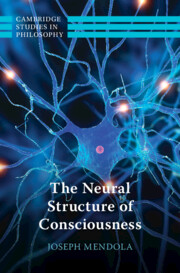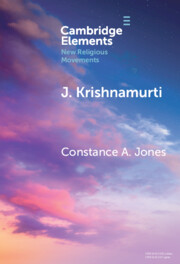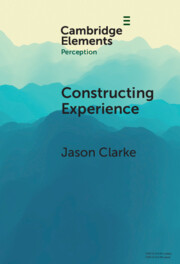Refine search
Actions for selected content:
243 results
Chapter 1 - Introduction
-
- Book:
- The Neural Structure of Consciousness
- Published online:
- 27 July 2025
- Print publication:
- 18 September 2025, pp 1-34
-
- Chapter
- Export citation
How much like us?
-
- Journal:
- Religious Studies , First View
- Published online by Cambridge University Press:
- 02 September 2025, pp. 1-3
-
- Article
-
- You have access
- Open access
- HTML
- Export citation
Chapter 1 - Staging Consent
-
- Book:
- Manufacturing Dissent
- Published online:
- 03 October 2025
- Print publication:
- 21 August 2025, pp 16-57
-
- Chapter
- Export citation
4 - The Lived Experience of Visible Difference
-
- Book:
- Appearance, Disability and the Law
- Published online:
- 31 July 2025
- Print publication:
- 14 August 2025, pp 41-62
-
- Chapter
- Export citation
Panpsychism’s problem of evil?
-
- Journal:
- Religious Studies , First View
- Published online by Cambridge University Press:
- 01 August 2025, pp. 1-13
-
- Article
-
- You have access
- Open access
- HTML
- Export citation

The Neural Structure of Consciousness
-
- Published online:
- 27 July 2025
- Print publication:
- 18 September 2025
Introduction
-
- Book:
- Embodiment in Nineteenth-Century American Literature
- Published online:
- 29 June 2025
- Print publication:
- 17 July 2025, pp 1-25
-
- Chapter
- Export citation
Chapter 1 - Drift
-
- Book:
- Embodiment in Nineteenth-Century American Literature
- Published online:
- 29 June 2025
- Print publication:
- 17 July 2025, pp 26-54
-
- Chapter
- Export citation

Embodiment in Nineteenth-Century American Literature
-
- Published online:
- 29 June 2025
- Print publication:
- 17 July 2025
Chapter 11 - Tying It All Together
-
- Book:
- Tip of the Tongue States
- Published online:
- 26 May 2025
- Print publication:
- 12 June 2025, pp 203-219
-
- Chapter
- Export citation
Chapter 11 - Misjudging Needs
- from Part III - Diversity of Desires and Limits of Liberty
-
-
- Book:
- Complex Ethics Consultations
- Published online:
- 17 May 2025
- Print publication:
- 05 June 2025, pp 90-95
-
- Chapter
- Export citation
Chapter 9 - What Is an Emotion?
- from Part Three - What Happens in the Brain when Music Evokes Emotions?
-
- Book:
- Good Vibrations
- Published online:
- 01 May 2025
- Print publication:
- 22 May 2025, pp 195-202
-
- Chapter
- Export citation
Conscious artificial intelligence and biological naturalism
-
- Journal:
- Behavioral and Brain Sciences / Accepted manuscript
- Published online by Cambridge University Press:
- 21 April 2025, pp. 1-42
-
- Article
-
- You have access
- Export citation
Sensory Horizons and the Functions of Conscious Vision
-
- Journal:
- Behavioral and Brain Sciences / Accepted manuscript
- Published online by Cambridge University Press:
- 21 April 2025, pp. 1-53
-
- Article
-
- You have access
- Export citation
Suffering at the Margins: Non-Experiential Suffering and Disorders of Consciousness
-
- Journal:
- Cambridge Quarterly of Healthcare Ethics , First View
- Published online by Cambridge University Press:
- 18 March 2025, pp. 1-9
-
- Article
-
- You have access
- Open access
- HTML
- Export citation

J. Krishnamurti
- Self-Inquiry, Awakening, and Transformation
-
- Published online:
- 28 February 2025
- Print publication:
- 27 February 2025
-
- Element
- Export citation
2 - Philosophy of AI
- from Part I - AI, Ethics and Philosophy
-
-
- Book:
- The Cambridge Handbook of the Law, Ethics and Policy of Artificial Intelligence
- Published online:
- 06 February 2025
- Print publication:
- 13 February 2025, pp 40-58
-
- Chapter
-
- You have access
- Open access
- HTML
- Export citation
Chapter 1 - Behavior
- from Section 1: - Basic Introduction
-
-
- Book:
- International Compendium of Movement Disorders
- Published online:
- 07 January 2025
- Print publication:
- 06 February 2025, pp 5-10
-
- Chapter
- Export citation

Constructing Experience
- Expectation and Attention in Perception
-
- Published online:
- 30 January 2025
- Print publication:
- 30 January 2025
-
- Element
- Export citation
Chapter 10 - ‘The Individual Operated Upon’
- from Part IV
-
- Book:
- Acoustics in Nineteenth-Century Literature and Science
- Published online:
- 13 December 2024
- Print publication:
- 19 December 2024, pp 199-222
-
- Chapter
- Export citation
